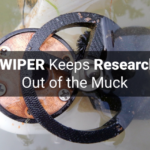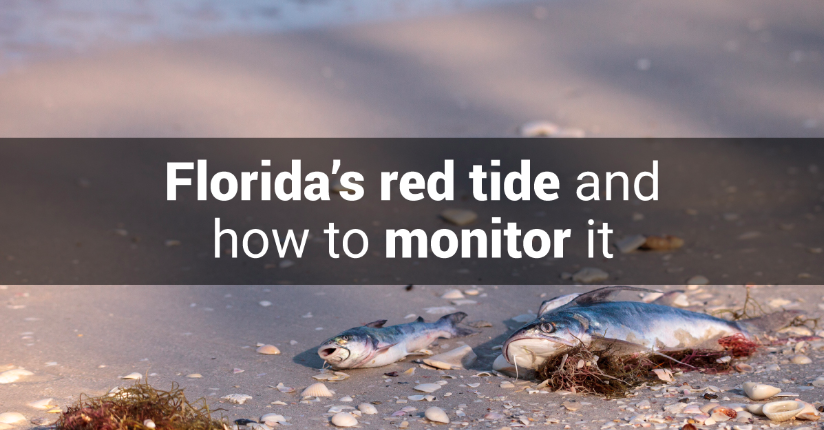
miniWIPER Keeps Researchers Out of the Muck
May 17, 2018
Monitoring the Effects of Hurricane Michael
October 24, 2018As it does almost every year, Florida is currently experiencing what is known as the red tide, more commonly referred to as harmful algae blooms. Florida’s Fish and Wildlife Conservation Commission (FWC) reported that red tides have been observed in the Gulf of Mexico since the 1700s but this year’s red tide has been one of the worst ever recorded.
What is the Red Tide?
Red tides are very common place in the Gulf of Mexico and no stranger to the residents of Florida. Many different harmful algae blooms can be found in the Gulf, but the organism Karenia brevis, is found in high concentrations throughout the year and is the cause of the red tide.
As explained by FWC, generally, red tides originate offshore in areas where the waters have poor nutrient levels. The red tide can affect thousands of square miles and can last for many months. The current Florida red tide has been persisting on for more than 9 months now.
The side effects of the Red Tide
The red tide produces a toxin lethal to fish, birds, and other marine life. As seen during the current red tide, fish kills are a major concern for the fish population and fishing industry alike. The latest red tide has left Florida beaches strewn with dead marine life – leaving its mark on the tourist and travel industry as well.
The red tide reaches further inland than just the ocean’s shores. For humans, a common side effect of the red tide is respiratory irritation resulting from the toxic water reaching land and becoming airborne. Consuming contaminated seafood is also known to cause illness.
Monitoring the Red Tide
PME’s Cyclops-7 Logger can help monitor and record the algae levels of Florida’s red tide. The logger connects to a Turner Designs Cyclops-7F sensor. This self-contained system is used to record measurements internally at a variety of sample rates. The Cyclops-7F uses the principal of fluorescence to measure very small concentrations of pigments, such as Phycoerythrin, which is found in some marine based cyanobacteria. Researchers monitor changes in concentration over time to help identify when conditions are favorable to the formation of red tides. The Cyclops-7 Logger stores the collected data on an internal flash drive which can be easily offloaded from the logger to a computer via USB once the system is retrieved.
The Cyclops-7F can sample a variety of measurements including Phycoerythrin, Phycocyanin, CDOM/FDOM, Chlorophyll, Crude oil, Fluorescein Dye, Refined Fuels, Rhodamine WT Dye, and Turbidity.
Contact us today, to discuss how the Cyclops-7 Logger can assist you in your research efforts.






